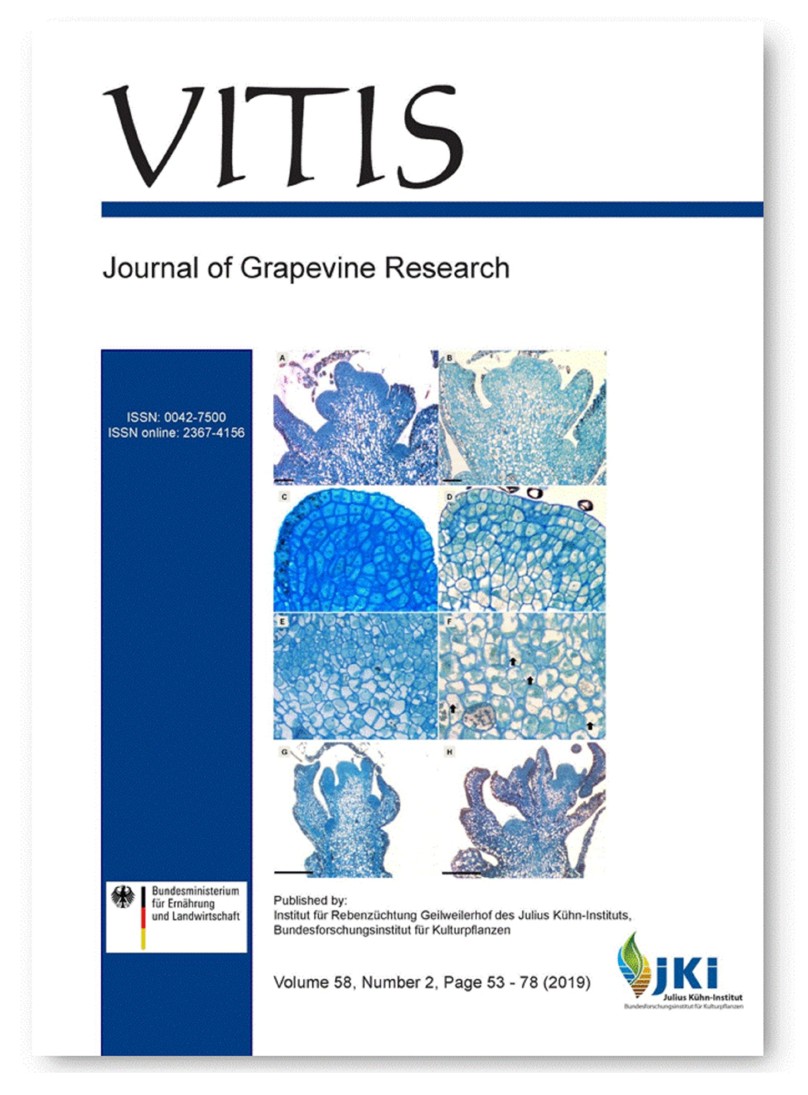Cryopreservation of grapevine (Vitis spp.) shoot tips from growth chamber-sourced plants and histological observations
DOI:
https://doi.org/10.5073/vitis.2019.58.71-78Keywords:
grapevine; ex situ conservation; droplet vitrification; germplasm.Abstract
Many genebanks rely on cryopreservation as a method to preserve vulnerable field collections of vegetatively propagated crops. Effective cryopreservation procedures have been identified for Vitis; however, they usually use in vitro plantlets as the shoot tip source materials. It is costly to establish Vitis collections in vitro prior to cryopreservation. We sought to determine if growth chamber derived Vitis plants could serve as the source of shoot tips for cryopreservation. Nodal sections from growth chamber derived plants were surface-disinfected and placed in tissue culture on pre-treatment medium for 2 weeks. Uniform apical shoot tips (1 mm) were first obtained from the nodal sections and then precultured for 3 days on medium containing 0.3 M sucrose, salicylic acid, glutathione (reduced form), ascorbic acid and plant preservative mixture. Half-strength PVS2 was applied for 30 min at 22 °C, prior to full-strength PVS2 treatment at 0 °C. Cryopreserved shoot tips had the highest average regrowth of 50 and 55 % without and with cold-acclimation followed with a full-strength PVS2 exposure duration of 40 and 30 min at 0 °C, respectively. This cryopreservation protocol achieved high percentages of regrowth in V. vinifera 'Chardonnay' and 'Riesling' and V. hybrid 'Oppenheim'. Histological observations revealed that shoot tips from growth chamber plants had apical as well as multiple lateral meristems that survived LN immersion. The preservation of multiple meristems in each shoot tip may increase the capacity of shoot tip regeneration in cryopreserved Vitis that originates from ex vitro sources. The high percentage of regrowth after shoot tip cryopreservation using Vitis shoot tips derived from growth chamber source plants suggest that it may be possible to cryopreserve Vitis shoot tips without first introducing each accession into tissue culture.
Downloads
Published
Issue
Section
License
The content of VITIS is published under a Creative Commons Attribution 4.0 license. Any user is free to share and adapt (remix, transform, build upon) the content as long as the original publication is attributed (authors, title, year, journal, issue, pages) and any changes to the original are clearly labeled. We do not prohibit or charge a fee for reuse of published content. The use of general descriptive names, trade names, trademarks, and so forth in any publication herein, even if not specifically indicated, does not imply that these names are not protected by the relevant laws and regulations. The submitting author agrees to these terms on behalf of all co-authors when submitting a manuscript. Please be aware that this license cannot be revoked. All authors retain the copyright on their work and are able to enter into separate, additional contractual arrangements.



